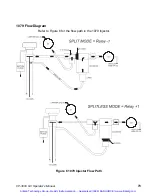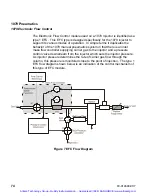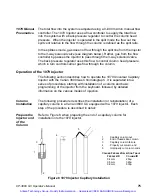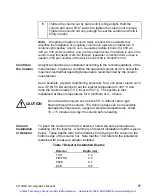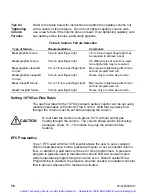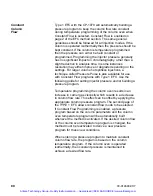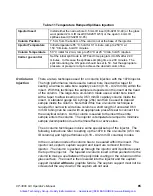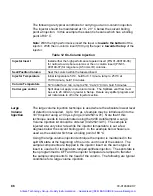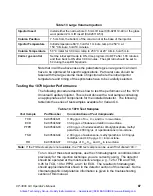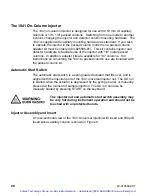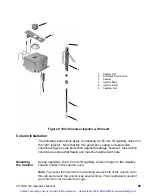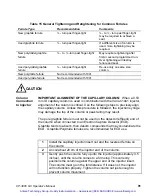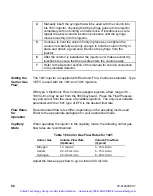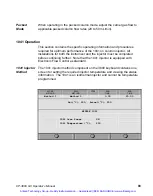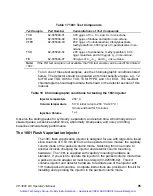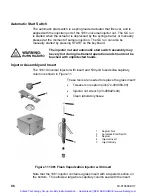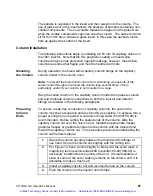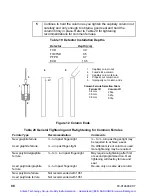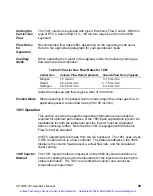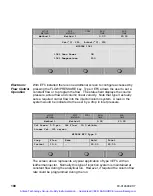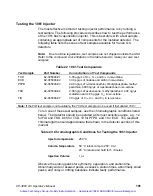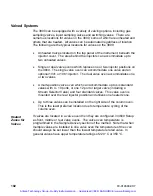
CP-3800 GC Operator’s Manual
87
Table 13 Large Volume Injection
Injector Insert
Install either the narrow bore 0.5 mm ID insert (03-926119-49) or the glass
wool packed 2 mm ID insert (03-926119-53).
Column Position
7.5 cm from the bottom of the column nut at the base of the injector.
Injector Temperature
Initial temperature 66°C, hold for 1 minute, ramp to 250 °C at
150 °C/minute, hold 10 minutes.
Column Temperature
50 °C initial for 3.00 min, ramp to 250 °C at 20 °C/min, hold 5 min.
Carrier gas control
Set the initial split mode to ON, time program it to OFF after 1.00 minutes
and then back to ON after 3.00 minutes. The split ratio should be set to
50 during the split ON periods.
Note that in all the above cases the parameters given are generic and will
have to be optimized for specific applications. Particular care should be
taken with the large volume mode of injection where the initial injector
temperature and timing of the split states have to be carefully selected.
Testing the 1079 Injector Performance
The following procedure describes how to test the performance of the 1079
Universal Capillary Injector. This is best done with a test sample containing
an appropriate set of components for the installed detector. The following
table lists the series of test samples available for Varian GC.
Table 14 1079 Test Samples
Test Sample
Part Number
Concentrations of Test Compounds
TCD
82-005048-01
3.00 µg/µL of C
14
, C
15
, and C
16
in iso-octane.
ECD
82-005048-02
33.0 pg/µL of lindane and aldrin in iso-octane.
PFPD 82-005048-03
20.0
ng/µL
of n-dodecanethiol, tributylphosphate, methyl
parathion; 4000 ng/µL of n-pentadecane in iso-octane.
TSD
82-005048-04
2.00 ng/µL of azobenzene, methyl parathion; 4.00 ng/µL
malathion and 4.00 µg/µL C
17
in iso-octane.
FID
82-005048-07
30 ng/µL of C
14
, C
15
, and C
16
in iso-octane.
Note:
If the FID test sample is not available, the TCD test sample can be used if first diluted 100:1.
To run one of these test samples, use the chromatographic conditions listed
previously for the injection technique you are currently using. The detector
should be operated at the most sensitive range, e.g., 12 for FID and TSD,
0.05 for TCD, 10 for PFPD, and 1 for ECD. The resultant chromatogram
should approximate that shown in the detector section of this manual. Some
chromatographic interpretation information is given in the troubleshooting
section of this manual.
Artisan Technology Group - Quality Instrumentation ... Guaranteed | (888) 88-SOURCE | www.artisantg.com

